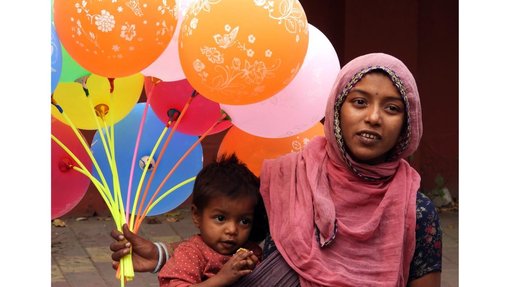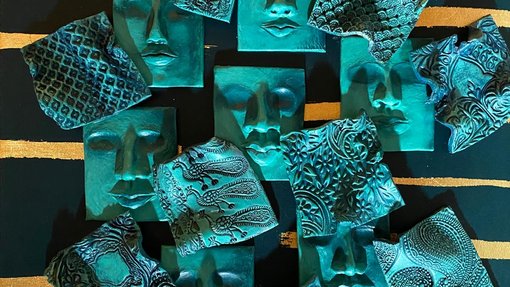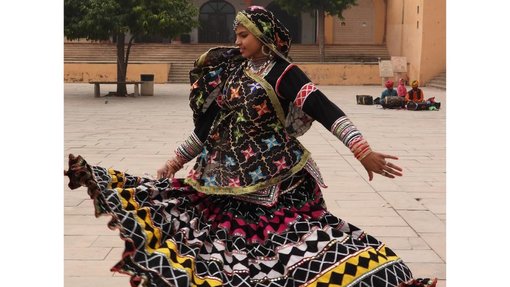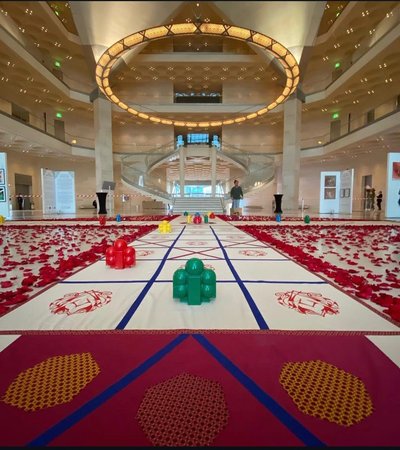In celebration of the Qatar-India 2019 Year of Culture, Ektashif: India features the works of seven Qatari artists who embarked on a ten-day educational art trip to India from 23 November to 2 December 2019. The exhibition presents the artists’ experiences as a vibrant collection of artworks that range from paintings and sketches to photography and installations, each reflecting how their deepened artistic visions.
In celebration of the Qatar-India 2019 Year of Culture, Ektashif: India features the works of seven Qatari artists who embarked on a ten-day educational art trip to India from 23 November to 2 December 2019. The exhibition presents the artists’ experiences as a vibrant collection of artworks ranging from paintings and sketches to photography and installations, each reflecting their deepened artistic visions.





